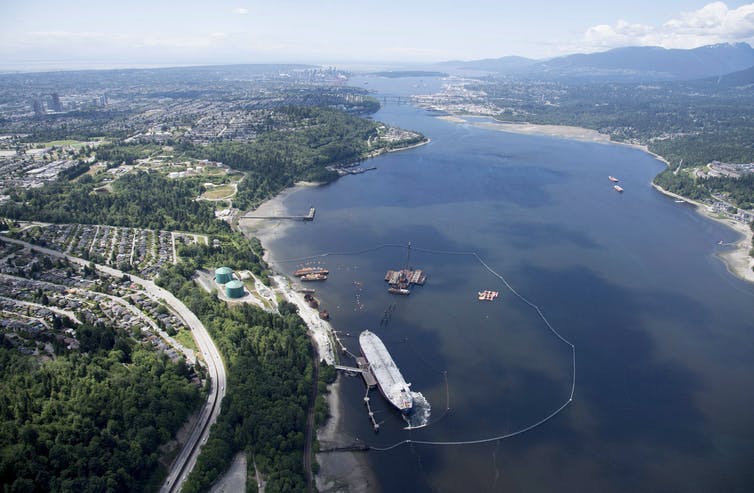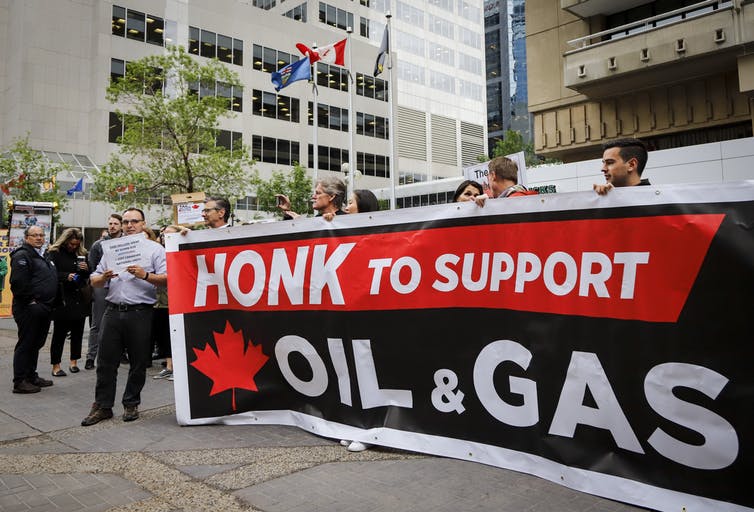By Warren Mabee, Queen’s University, Ontario
On June 18, the government of Canada declared a national climate emergency. The next day, the same government approved the Trans Mountain pipeline expansion (TMX), which will be able to move almost 600,000 barrels of oil per day from Alberta to the Port of Burnaby in British Columbia.
If this seems like a contradiction, you are not alone.
To date, Canada is the largest single jurisdiction to have declared a national climate emergency, following nations like Scotland, regions like Catalonia in Spain and cities like Vancouver and San Francisco.
Climate Emergency vs. State of Emergency
Altogether, 83 million people, living 623 jurisdictions, are now living under a state of climate emergency. The vast majority of these declarations have occurred in the last six months. The term climate emergency intentionally evokes a state of emergency — and implies imminent action on the part of the government.
Declaring a state of emergency gives governments the powers needed to respond to the emergency, from closing roads or bridges in the case of flooding to calling out the army to manage security threats.
By comparison, the declaration of a climate emergency is far less powerful. While governments may commit to actions when declaring a climate emergency, these actions usually amount to creating plans and engaging with their citizens. Yet this is not what concerned citizens and non-governmental organizations expect in response.
Read more: Language matters when the Earth is in the midst of a climate crisis
They demand radical action: the dramatic reduction of greenhouse gas emissions, commitments to keep fossil fuels in the ground, the end of subsidies to fossil fuel producers and support for the rapid expansion of renewable energy. The TMX approval suggests that radical action is off the table — at least for now.
The Climate Lens Approach
Governments can take a more pragmatic approach when facing a climate emergency. They can apply a “climate lens” approach to vet future policy decisions.
A climate lens forces government to address the environmental impacts of their decisions. For example, Infrastructure Canada now uses a climate lens to assess both greenhouse gas (GHG) mitigation and climate change resilience associated with any new project.
Using a climate lens approach, every investment should get you closer to a cleaner future. Does this logic hold up with the approval of the Trans Mountain pipeline expansion?

In his announcement, Canadian Prime Minister Justin Trudeau pledged every dollar in federal revenue derived from the Trans Mountain expansion project to investments in clean energy and green technology. He was, essentially, making more than $500 million a year in taxes available for these types of projects as the pipeline becomes operational, which is expected in 2022.
This level of investment may help reduce greenhouse gas emissions and increase Canada’s resilience to climate change, allowing the government to safely claim some progress. It remains to be seen, however, if Canadians will accept this offer as a good deal.
A Good Deal for Canada?
There are many reasons that Canadians may balk. It is not a particularly large amount of money; Canadian subsidies to the fossil fuel sector total $3.3 billion annually, almost seven times greater than the government pledge.

Read more: Trans Mountain ruling: Victory for environmentalists, but a setback for action on climate change
It is also not necessarily a competitive offer: the additional carbon emissions from the production of oil to fill the new pipeline are estimated to be between 14-17 million tonnes per year. This means the government is pricing its taxes at the equivalent of about $29 per tonne of carbon, considerably less than the $50 per tonne target price.
Canadians are also highly aware that greening the world’s economy will mean dramatically reducing the country’s greenhouse gas emissions. This doesn’t mean that oil must be completely phased out, particularly in the short term, but carbon constraints, including taxes and regulations will change the way oil is produced and used.
Canadian oil will be subject to significant scrutiny by prospective buyers around the world, who have to meet increasingly stringent carbon rules. The risk of stranded assets in the Canadian oil and gas sector is real and significant: if the country is going to build a pipeline, it should also take steps to ensure that the product that flows through it is what potential customers will demand.
Canada’s Options Moving Forward
There is a major disconnect between declaring a climate change emergency and approving a major oil pipeline. The government could address this in one of two ways.
It could use carbon taxes (not corporate taxes) to support a low-carbon economy. The carbon tax raised more than $2.6 billion in 2018-19, and this will likely grow to more than $5 billion as carbon prices hit $50 per tonne in 2022. If the carbon price attached to every barrel of oil was invested in GHG emission reduction and climate mitigation, this would make a major difference — on par with current government subsidies for the fossil sector.
Another approach would be to ensure that every barrel of oil that goes into the new pipeline meets stringent regulations on greenhouse gas emissions intensity — the amount of carbon dioxide equivalents released in the production of each barrel. Canada introduced the Clean Fuel Standard in 2016 to incentivize the domestic use of low-carbon fuels. A similar policy could regulate the emissions associated with fossil energy production, forcing industry to adapt, yet safeguarding an important economic sector from global change.
Read more: Liberal environmental contradictions could pave way for Conservative win
Many Canadians are struggling with the federal government’s actions over recent days. It may be that the pro-environment and pro-industry sides are too divided to find common ground.
We need policies that acknowledge the urgency of the climate emergency and work to address the critical issues that have led to this emergency — a solution that works for all.
Warren Mabee, Director, Queen’s Institute for Energy and Environmental Policy, Queen’s University, Ontario
This article is republished from The Conversation under a Creative Commons license. Read the original article.
Main image: Protesters hoist a placard depicting Justin Trudeau in Vancouver on June 18, 2019. Credit: THE CANADIAN PRESS/Jonathan Hayward
Subscribe to our newsletter
Stay up to date with DeSmog news and alerts






